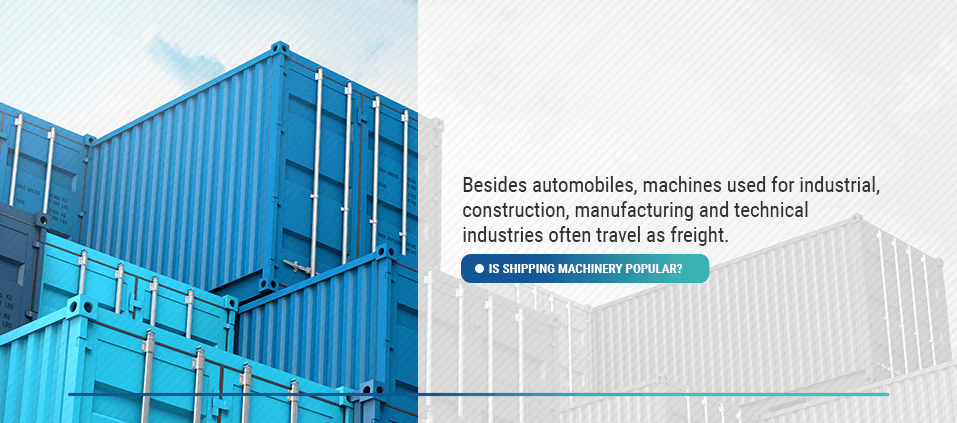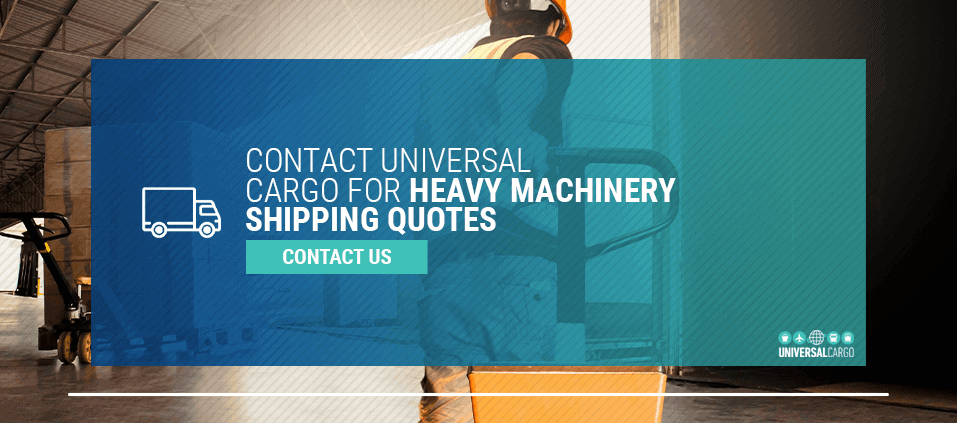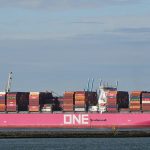Shipping Machinery
There are many reasons why you might need to ship heavy machinery. If you’re in construction, you might have a whole fleet of backhoes, excavators and other equipment that need to travel with you to a faraway job site. If you’re a logistics manager for a machine tool manufacturer, you probably have dealers or clients around the globe who need you to deliver that equipment.
Machinery shipping can be quite an undertaking. Since it doesn’t usually conform to a standard size or weight and is typically expensive or delicate, a machine needs meticulous procedures to arrive in one piece.
What Should I Review When Shipping Machinery?
Machinery shipping is a precise process, as is any form of importing or exporting. When the two combine, you have to take many factors into account to ensure your machines stay protected while in transit and meet all regulatory requirements.
- Dimensions: Any item that ships must have declared dimensions to allow carriers to accommodate them aboard planes, ships or trucks. To ensure the carrier can fit your machinery shipment, it’s crucial to measure the height from its tallest point, length from its longest, and width from its widest. Failing to account for an antenna or other appendage may mean the machine can’t fit where your carrier has planned to put it.
- Weight: Your freight’s transportation mode may have limitations on weight, and your carrier will use weight to determine an accurate price for your shipment. Some shipping methods will require your equipment to be lowered onto and lifted off a vessel for transport, and the weight of your machine will determine the crane needed.
- Density: The dimensions and weights by themselves won’t tell a hauler everything they need to know when it comes to accommodating your irregularly shaped machinery. You’ll use density to communicate your shipment’s cubic foot weight, and your carrier will use it to determine your freight class. To calculate density, take your machine’s dimensions in inches, as though it were a perfect cube. Divide your measurement by 1,728 to determine the total cubic feet, and then divide it by the machine’s weight. You can express your shipment’s density as pounds per cubic feet.
- Starting and endpoints for delivery: As with any shipment, you need to make arrangements at the ports where you plan to ship out and pick up the load. You can pick the items up yourself or arrange truck transportation to collect the machinery from the port and carry it to its final destination.
- Government regulations: Importing and exporting have many related regulations. Since any international shipment will involve at least two countries, your freight will be subject to more rules imposed from either the starting point or destination. You’ll also need to consider any regulations for docking your items at any stops along the route. The U.S. and China, common senders and receivers of machinery shipments, both have stringent customs laws for importing and exporting. A freight forwarder can help you make sense of all these nuances and help you clear customs.
- Freight class: Your freight class will be between 50 and 500, and can get more complicated for heavy machinery. The freight class is calculated based on the shipment’s density, stowability, level of care needed in handling and liability. Higher density items usually stay more secure during shipment, lowering the fright class. Heavy machinery usually ranks high on the density scale. Its dimensions determine how easy it is to stow, and its delicacy determines how to approach handling. Liability can be influenced by its price per pound, breakability and susceptibility to theft.
- Insurance: Heavy machinery is a high-value asset, made even more precious if it’s a custom product or one for a highly specialized industry. These factors and more can add additional risk when shipping heavy machinery. It’s generally smart to purchase third-party freight insurance beyond what your carrier covers to protect yourself from liability.
Universal Cargo is an expert freight forwarder that can help you through the entire process. We have plenty of experience in oversized loads and all kinds of heavy machinery, and we can take your cargo under our wing through the process. We’ll prepare all the paperwork, from the bill of lading to customs forms, so you can rest assured your machinery gets to where it needs to be on-time, without a hitch.
 Is Shipping Machinery Popular?
Is Shipping Machinery Popular?
The short answer is — yes. One of the world’s most common freights is a piece of machinery — automobiles. Cars are a popular commodity worldwide, and foreign vehicles are of particular interest to American consumers. Over $8 million worth of cars and car parts ship around the world each year.
Besides automobiles, machines used for industrial, construction, manufacturing and technical industries often travel as freight. These items need to ship from their original equipment manufacturers (OEMs) to their intended users. Whenever machines need to get from one place to another, via ocean or truck, machinery shipping comes into play. These large, high-value items are usually shipped with a freight forwarding partner to ensure the shipment runs smoothly.
The United States and China are frequent machinery shippers, as these countries are known for their manufacturing industries. Companies that make heavy machinery and those that need it for their factories or work sites have a strong presence in these regions.
China held 22.2% of the global market for machine tool producers in 2018, the largest share dedicated to any one country. That same year, the U.S. exported more machinery and transportation equipment than any other country. The total value of U.S. machinery exports rested at $1.3 trillion. The second-largest exporter was China, followed by Germany, Hong Kong and France. Considering the full value of worldwide machinery exports was over $7 trillion, we can say it with absolute certainty — shipping machinery is quite popular.
Shipping Heavy Machinery
How does heavy machinery usually ship? The process often looks different from how other items travel. Usually, machines like cars or construction equipment are overweight or oversized cargo. So, while most freight travels in 20- to 40-foot containers, bulky equipment needs something different. Machinery shipping can be referred to as “project freight” because planning the logistics gets so complicated.
Standard containers have a weight limit of 20-21 metric tons and usually require the machine to be disassembled to fit. While you won’t have any weight restrictions for an overweight or oversized shipment, you have some limits on what can ship by truck. The legal load limit for a flatbed truck is 8.5 feet high, 8.5 feet wide, 43-53 feet long and 46,000 pounds.
In some states, oversized cargo trucks over 12 feet wide will need travel escorts. These cars will warn drivers of accidents, road work and other issues ahead. Oversized flatbeds sometimes have restricted travel hours and must avoid the road on nights, weekends and holidays. These vehicles also often need special markings in the form of flags, symbols or lights to warn other drivers.
When container shipping isn’t an option — and it usually isn’t — heavy machinery shippers have several other methods, which can apply to trailers and ships alike:
- Lift-on/Lift-off (LOLO): When equipment can’t come aboard by another means, it may require a crane. This method can get expensive since it involves using another heavy machine and a trained crew to operate it.
- Roll-on/Roll-off (RORO): Instead of bringing your heavy machinery airborne, it’s often easier to roll them. If your machine has wheels, RORO is often the preferred method. The only downside is that carriers will have difficulty stacking the machinery aboard the vessel, which means your machines will limit the available space.
- Flat rack shipping: While a standard container is out of the question, a flat rack container can handle bulk loads and project freight with ease. It’s a specialized container without sidewalls or a roof, allowing a machine to be strapped down and stacked on top of another surface. While this leaves machinery out in the open, you can protect your equipment with tarps and careful packaging.
 Can Universal Cargo Assist Me With My Heavy Machinery Shipment?
Can Universal Cargo Assist Me With My Heavy Machinery Shipment?
Of course! As a freight forwarder, we make it our mission to take all the hassle out of any shipping ordeal. To those freights that need extra steps and accommodations — like heavy machinery — we say, “Bring it on.” Our services include end-to-end machinery freight forwarding, pickup and delivery, cargo insurance and customs clearance. Once we have the information from you, we take it from there. We can help you find the right combination of transportation methods and carriers with vehicles that can handle your shipment’s shape, weight and dimensions.



